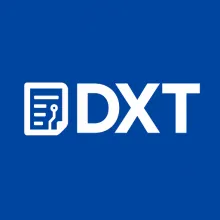
The anticipation surrounding OpenAI's next major language model, GPT-5, is palpable. While official details are currently scarce, fueled by the announcement on OpenAI's website: Introducing GPT-5, we can gather insights from available information and industry trends to form a reasonable understanding of what GPT-5 might entail.
Rumored Capabilities and Improvements
GPT-5 is widely expected to showcase significant advancements compared to its predecessor, GPT-4. Key areas of improvement are likely to include:
- Enhanced Natural Language Understanding (NLU): Deeper comprehension of nuances in language, context, and intent, leading to more accurate and relevant responses.
- Improved Natural Language Generation (NLG): Generating more coherent, creative, and human-like text, capable of producing various content formats like articles, poems, code, and summaries.
- Multimodal Capabilities: Integrating image, audio, and video processing capabilities, allowing the model to understand and generate content across multiple modalities. This could include tasks like image captioning, audio transcription, and video analysis.
- Increased Reasoning Abilities: Enhanced capacity for logical reasoning, problem-solving, and critical thinking, enabling it to handle more complex tasks.
- Expanded Knowledge Base: A substantially larger dataset for training, giving the model access to an even wider range of information and up-to-date knowledge.
- Reduced Hallucinations: Minimizing the generation of false or misleading information, a common issue with current large language models (LLMs).
Potential Features and Innovations
Industry speculation and technological advancements suggest that GPT-5 might incorporate:
- Fine-tuning Capabilities: Advanced options for fine-tuning the model to suit specific domains and tasks, enabling businesses and developers to customize the model's behavior.
- API Enhancements: Improved API access, allowing developers easier integration and control over the model.
- Improved Safety and Alignment: Enhanced measures to prevent misuse, bias, and the generation of harmful content, aligning the model with human values.
- Longer Context Windows: The capacity to process and retain more information, allowing the model to work with longer documents and conversations.
Timeline and Availability
OpenAI has been characteristically tight-lipped about the specifics of the release date. However, given the rapid advancements in the field, anticipation is high. While the precise timeline remains unknown, early estimates suggest a potential release sometime in the future.
Ethical Considerations
As GPT-5 is likely to become significantly more powerful, ethical considerations are paramount. This includes addressing issues like:
- Bias Mitigation: Ensuring fairness and avoiding the perpetuation of existing societal biases in the model’s outputs.
- Misinformation and Deepfakes: Preventing the model from generating or spreading false information.
- Job Displacement: Considering the potential impact on various industries and workforce.
OpenAI is expected to prioritize these aspects to ensure the responsible and beneficial use of GPT-5.
GPT-5 represents a substantial leap forward. As the release approaches, expect even more information from OpenAI. The model promises to revolutionize various industries and open new possibilities for human-computer interaction. We'll be watching closely, awaiting the formal announcement.
```
